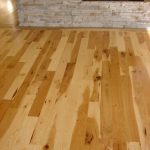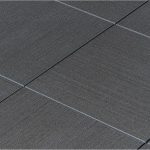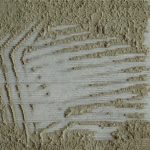Vancouver is a pretty rainy city, especially in wintertime (although as I write, the sun’s just come out for the first time in a few days … beautiful!). As such, I’ve been thinking a lot about excessive water and how sometimes accidents happen inside your home whether it’s raining outside or not. Maybe you’ve left the bath running while trying to get the dishes done, or helping the kids with homework. Or maybe a pipe burst due to the cold. Or, maybe there are blockages that have resulted in major drainage problems in your area.
 In any case, wood floors are extremely susceptible to moisture damage. And when accidents involving excessive moisture occur, you need a strategy in place to protect your investment. And this isn’t just about your floor. The growth of mold is also a concern, which can drastically affect air quality. So, in the event of flooding, you’ve got to act fast.
In any case, wood floors are extremely susceptible to moisture damage. And when accidents involving excessive moisture occur, you need a strategy in place to protect your investment. And this isn’t just about your floor. The growth of mold is also a concern, which can drastically affect air quality. So, in the event of flooding, you’ve got to act fast.
When you are inundated by excessive water, here are a few things you might want to consider if you’ve got wood flooring.
- Turn off the power to the affected room until excessive water has been removed
- If you’ve got glueless engineered or laminate flooring that you’ve floated, take it up right away if you can, dry them, and store the boards in a dry place. Allow a few days for the boards to expand and contract before re-installing them, even after they’re dry
- dry out the subfloor, as residual moisture from below can be damaging in the long run
- If you can’t take up the floors, large fans pointed at the affected area is your next step
- Remove baseboards and other moldings that have also been affected, and store them in a dry place
- Rent additional drying equipment and dehumidifiers to ensure that residual dampness is dealt with
- Ensure that airflow is optimum during the drying process
Another consideration which has probably already leapt to your mind is to call a wood flooring expert to advise you on your specific situation. An expert eye who is on the scene can provide far more insight than any article or blog post can – even this one! Your local flooring contractor has specialized equipment for all kinds of situations like yours, including precise moisture testing tools which can test both your flooring and the surrounding site including your subfloor.
 Floods tend to encourage the growth of molds, which can affect your health. So, another call to consider making is one to an air quality accessor, to make sure that the presence of mold hasn’t risen, and that airflow in your home keeps that presence to a minimum. You might want to have an initial visit a month to three months after the incident, with additional visits depending on those initial findings. An air quality assessment can help you to map out ways to keep mold growth at a minimum in the long run, even well after your flood situation is far behind you.
Floods tend to encourage the growth of molds, which can affect your health. So, another call to consider making is one to an air quality accessor, to make sure that the presence of mold hasn’t risen, and that airflow in your home keeps that presence to a minimum. You might want to have an initial visit a month to three months after the incident, with additional visits depending on those initial findings. An air quality assessment can help you to map out ways to keep mold growth at a minimum in the long run, even well after your flood situation is far behind you.
Also, your home insurance carrier is another call to make, just to make sure that the stipulations in your policy are met with regard to flood damage. If your floor is damaged to the point where your insurance may cover the costs for a new floor, you’ll want to make sure to follow any instructions they have to the letter. Make sure you document as much as you can, including the reasons for the damage, and what was done in response. Be ready to provide the contact details of any professionals you worked with to solve the problem as well.
The ideal is that you’ll never need this kind of information. But, if you do, then I hope that the above will give you some direction as to how to deal with it.
Cheers!
Rob.

















